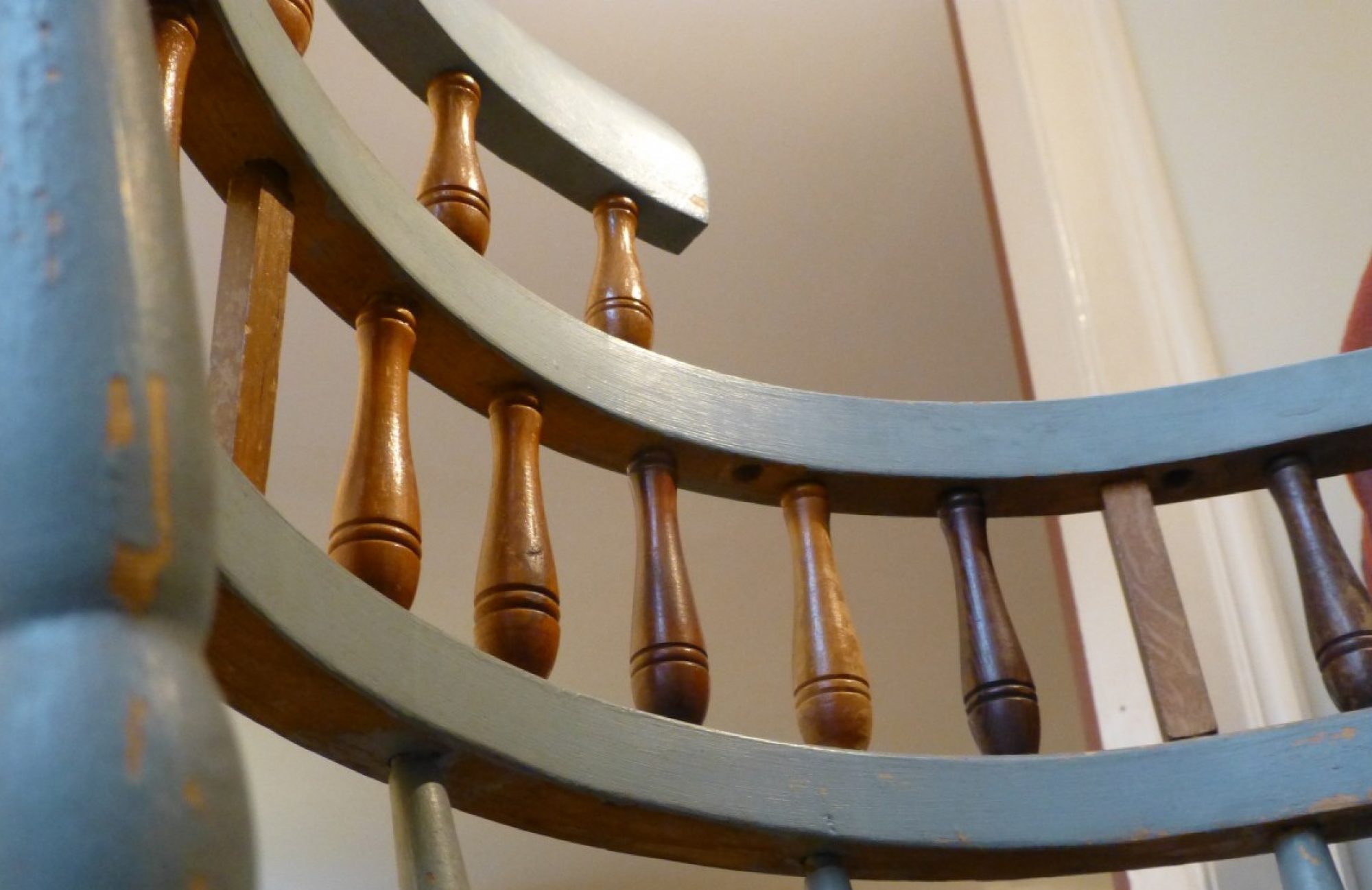What Are Relics?
To early Christians, “relics” were the holiest of items: fragments of objects once possessed or touched by a saint—or even fragments of the saints’ very bodies. Tiny chips of bone, swatches of cloth, or splinters of wood were encased behind glass and mounted in elaborate sculptures that evoked their origins, be they from the Shroud of Turin, the True Cross, or the finger of a saint. These objects are still among the most venerated objects in Catholic churches, often housed in treasuries, although some have since been transferred to museum collections.

To nineteenth-century Americans, the notion of a “relic” had evolved to connote fragments of the historical past, objects related to a significant event or person. Rather than serving as tangible connections to miracles or religious saints, the connections these objects boasted were to important military battles or the “Founding Fathers”—the Shroud of Turin replaced by a scrap from a U.S. flag flown over Fort McHenry during the Battle of Baltimore, or a piece of wood from George Washington’s coffin. While some relics are themselves objects that are significant for their rich materials or finely-crafted design (e.g. the silver inkstand used to sign the Declaration of Independence), other objects would be quotidian—or “junk”—if not for their associations with famous people or dramatic historical events: what would seem to be a mere hunk of rock bears an inscription that distinguishes it as a fragment of Plymouth Rock. While many nineteenth-century collectors amassed these objects as collections in their own right, they were sometimes assembled into more elaborate compilations, as seen in Henry Sheldon’s relic chair.
The practice of collecting wooden relics—whether from historic trees, buildings, or ships—was especially popular, but many items attest to this impulse to preserve, from tea leaves collected on the shores of Boston Harbor (from the Boston Tea Party) or everyday objects singed, melted, or burned in the Chicago Fire.

While this practice might seem antiquated, there is continuity into the present with the practice of souvenir keeping: for example, fragments of the Berlin Wall, otherwise unremarkable chunks of concrete that take on special resonance (and cost) due to their historic significance. These fragments also sometimes serve as memorials: objects connected to the tragedies of September 11, 2001, for example, have taken on reliquary resonance in the twenty-first century.
– Ellery Foutch, Assistant Professor
Further reading:
- Teresa Barnett, Sacred Relics: Pieces of the Past in Nineteenth-Century America (Univ. Chicago Press, 2013)
- William L. Bird, Jr., Souvenir Nation: Relics, Keepsakes, and Curios from the Smithsonian’s National Museum of American History (Chronicle, 2013)
- K. A. Marling, George Washington Slept Here: Colonial Revivals and American Culture, 1876-1986 (Harvard UP, 1988)
- Yvette Piggush, “Fancy History: John Fanning Watson’s Relic Box,” Common-place 10, no. 1 (Oct. 2009): http://www.common-place-archives.org/vol-10/no-01/lessons/
- Rodris Roth, “Pieces of History: Relic Furniture of the Nineteenth Century,” Antiques 101 (May 1972): 874-878.
- Laura Turner Igoe, “‘The limb in my Fathers arms’: The Environmental and Material Creation of a Treaty Elm Relic,” Common-place 17, no. 1 (Fall 2016): http://common-place.org/book/the-limb-in-my-fathers-arms-the-environmental-and-material-creation-of-a-treaty-elm-relic/
- Laura Turner Igoe, “Reuniting Two Treaty Elm Vases,” Winterthur Unreserved (23 August 2016): http://museumblog.winterthur.org/2016/08/23/reuniting-two-treaty-elm-vases/
On early Christian relics:
- Martina Bagnoli, Holger A. Klein, C. Griffith Mann, and James Robinson, eds., Treasures of Heaven: Saints, Relics, and Devotion in Medieval Europe (Yale UP/ Cleveland Museum of Art/ Walters Art Museum/ British Museum, 2010).
- Barbara Drake Boehm, “Relics and Reliquaries in Medieval Christianity,” in Heilbrunn Timeline of Art History (New York: The Metropolitan Museum of Art, originally published October 2001, last revised April 2011): http://www.metmuseum.org/toah/hd/relc/hd_relc.htm
- Charles Freeman, Holy Bones, Holy Dust: How Relics Shaped the History of Medieval Europe (Yale UP, 2011)
- Patrick Geary, “Sacred Commodities: The Circulation of Medieval Relics,” in The Social Life of Things: Commodities in Cultural Perspective, ed. Arjun Appadurai (Cambridge UP, 1986), 169-191.
- Relics and Remains: Special Issue of Past & Present 206 (January 2010): https://academic.oup.com/past/issue/206/suppl_5
- Judith M. H. Smith, “Portable Christianity: Relics in the Medieval West (c.700–1200),” 2010 Raleigh Lecture on History, Proceedings of the British Academy 181 (2010-2011).

You must be logged in to post a comment.